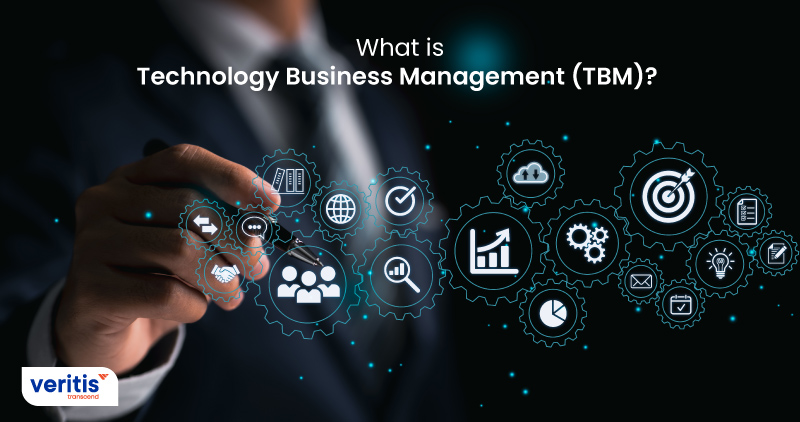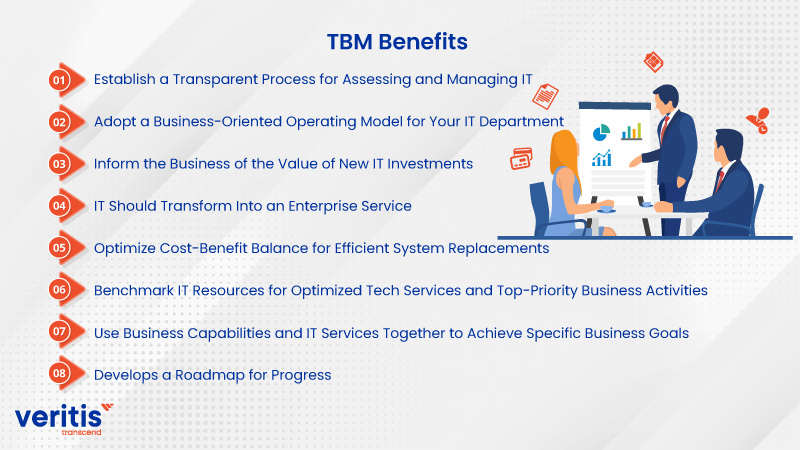
Firms have only just started to recognize that the objectives of IT go much beyond just granting access to users, maintaining equipment, and resolving issues. This is mainly due to the development of cloud technology infrastructure and the digital transformation. As a result, today’s IT departments serve as the organizational hub for all goals and objectives and lay the groundwork for successful enterprise business.
How can IT leaders successfully execute their IT strategy and maximize the effectiveness of their technology function? Many organizations are turning to the discipline of technology business management (TBM) as a means of helping technology leaders fulfill their IT strategy and the performance of their technology function. However, not all TBM is made equal. Some describe it as merely technology function financial management. Others use it to describe efficiency and streamlining. But in response to changing tools, talent, and expectations, TBM has evolved along with enterprise technology.
TBM is a framework that aids organizations in integrating IT into the overall operation, unlike some other resources. It is unique because it offers a route to complete IT integration rather than assuming firms are already fully connected. Thinking of IT as an integrated business management services unit is relatively new. IT usually operates outside a company’s primary objectives, just ticking the boxes to ensure IT efforts are accomplished. Let’s explore the concept of Technology Business Management (TBM).
What is Technology Business Management (TBM)?

A crucial procedure for today’s digital organization is the alignment of IT departments with overall business goals. The Technology Business Management process is a collaborative framework that assists companies in doing this.
It isn’t strictly prescriptive; instead, because it focuses on solutions, firms can utilize it with some degree of flexibility, much like many other frameworks on the market (see ITIL). In addition, TBM is designed to expand your business.
Before, IT often operated independently of other business management service units and their objectives. However, nearly every business unit and employee nowadays need access to software, hardware, and internal systems because technology infrastructure has become the cornerstone of many organizations. This has forced CEOs to consider business-IT alignment and technology in decision-making processes, moving IT to the organization’s center.
TBM enables companies to comprehensively analyze their IT cost structures, enabling them to reduce expenses, improve visibility, and make better use of their resources. Additionally, it gives technology executives a place at the table where they can demonstrate their capacity to have a strategic business plan influence on the larger organization. This enables them to stand out as trustworthy advisors and gain more respect for their technology infrastructure choices.
C-level technology executives, such as CIOs and CTOs, actively seek new tools to address the escalating demands of a dynamic digital environment. As technology becomes more agile, versatile, and transparent, these leaders recognize the necessity of acquiring new resources to facilitate business technology management growth and enable customers to thrive in an increasingly intricate ecosystem.
Useful link: Why Is Remote Infrastructure Management Important for Businesses?
TBM Council
The TBM Council, a non-profit group of tech industry professionals, is laying the foundation for creating an IT business management unit. Nearly 6,000 C-level technology executives, including CIOs, CTOs, and CFOs, make up the council.
The council, which started as a bi-annual summit, eventually became a non-profit, providing companies with standardization in a cooperative environment. Executives who join get access to a network of IT business management leaders and best practices that can scale to fit their company.
TBM Benefits

TBM is intended to assist IT leaders in gaining a deeper understanding of IT spending, budgets, and resources. One of the significant challenges facing IT leaders is how to justify increased spending for maintaining legacy technology and implementing cutting-edge technologies in the future.
TBM also helps executives outside of IT understand the importance of the IT division to the whole company. To ensure that the business supports IT and vice versa, organizations utilizing TBM aim to match IT practices and priorities with business technology management objectives.
1) Establish a Transparent Process for Assessing and Managing IT
TBM outlines how to monitor IT performance and reports each IT service’s budget, cost, and consumption so the company can pinpoint precisely which departments are responsible for a given technological demand. Through automation, TBM enables precise, real-time reporting.
2) Adopt a Business-Oriented Operating Model for Your IT Department
TBM combines financial transparency with information on IT spending and usage to support technology leaders’ collaboration with business partners on goals and objectives. TBM tracks and analyses the value of the resources that the company uses.
3) Inform the Business of the Value of New IT Investments
Most non-technical leaders are skeptical about the cost-benefit of their IT investments, even though IT accounts for most capital expenditures globally. As a result, they frequently respond by increasing IT costs. TBM enhances decision-making for essential IT projects.
4) IT Should Transform Into an Enterprise Service
The IT argument changes from the cost of IT to the financial value it delivers using data analytics to express costs in terms of services, where TBM converts critical metrics into valuable insights. TBM assists executives in controlling the cost, quality, and quantity of the services they use.
Useful link: Guide to Digital Transformation Technologies and Their Business Impact
5) Optimize Cost-Benefit Balance for Efficient System Replacements
TBM uses data to prioritize crucial value-driven activities, requiring IT and business executives to account for their influence on IT business management spend. TBM assigns sensitivity to protected assets and extracts value through cost reduction and avoidance.
6) Benchmark IT Resources for Optimized Tech Services and Top-Priority Business Activities
Executives focus on the value of IT by actively monitoring spending, organizing portfolios, and balancing cost and performance, with the assistance of benchmarking metrics frequently defined by key performance indicators (KPIs). In addition, business management tools assign IT resources to the most critical business priorities.
7) Use Business Capabilities and IT Services Together to Achieve Specific Business Goals
Through a collaborative budgeting process that provides insight into financial effect, company value, and desired results, technology business management tools lower costs without compromising basic service levels. Business management tools change IT from a cost center to a profit-enabler.
8) Develops a Roadmap for Progress
Since TBM is a strategic business plan, it is required by best practices to develop a roadmap in which IT serves as the primary driver of ongoing development. Firms that use the TBM framework, as a result, operate more effectively than in a haphazard manner, and every step of the journey is made transparent through mapping.
Conclusion
Technology Business Management (TBM) is a revolutionary strategy that empowers organizations to efficiently manage and maximize the return on their technology investments. It allows companies to comprehend and maximize their technological investments, coordinate IT efforts with corporate objectives, and boost operational effectiveness.
Firms can make data-driven decisions, improve cost transparency, and foster innovation by implementing TBM concepts. This will eventually help them succeed over the long term in a market increasingly dominated by technology.
Veritis, the Stevie Award winner, offers a range of bespoke solutions developed by our in-house experts. We focus on delivering efficient and affordable solutions tailored to your requirements. When you collaborate with us, you can expect to obtain a sustainable and enduring solution that addresses your unique needs.
Got Questions? Schedule A Call
Also Read:
- 8 Best Business Continuity Management Software Solutions
- 12 Best Features for Work Management Software That Matter Most
- All You Need to Know About How Digital Transformation Managed Services Accelerate Business
- 9 Data Security Best Practices for Your Business
- How AI Adoption Will Transform Your Business
- Business Transformation Vs. Digital Transformation: A Thin Line of Difference!